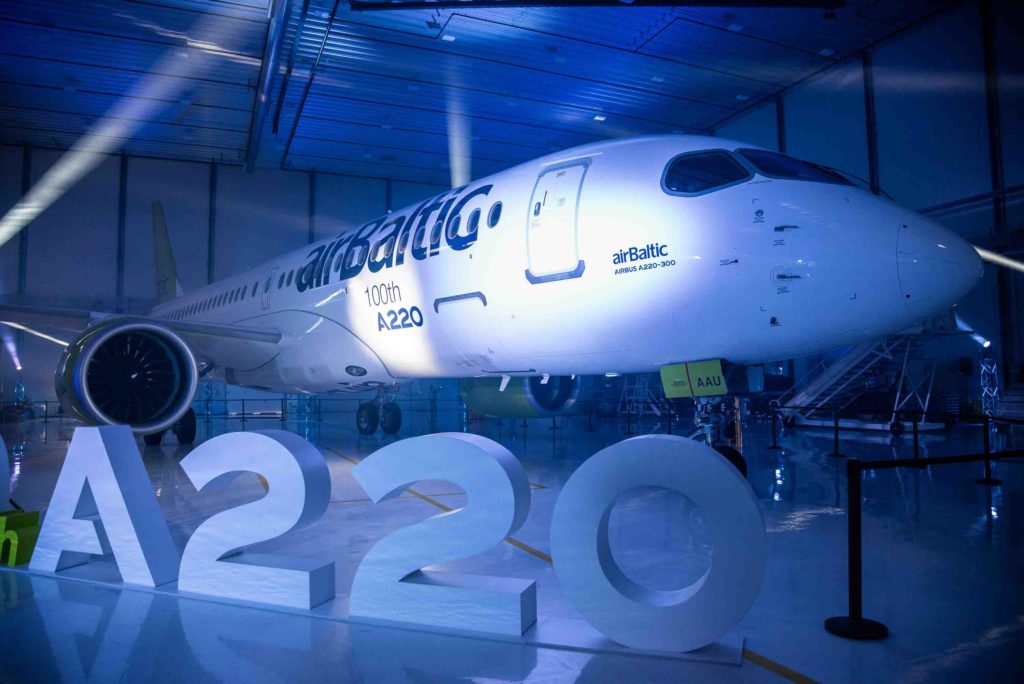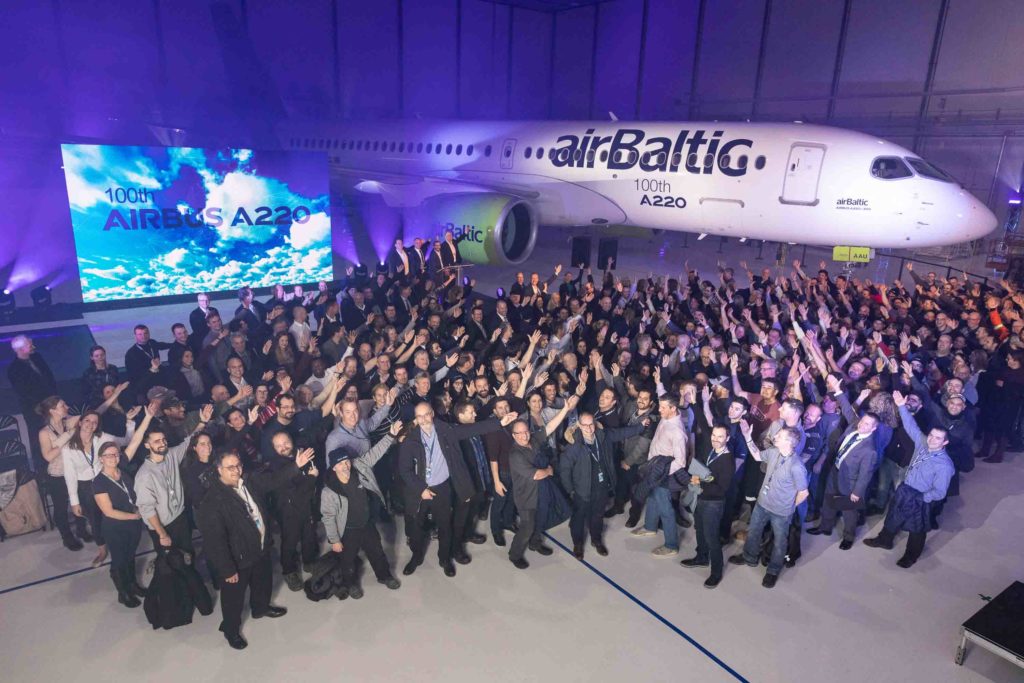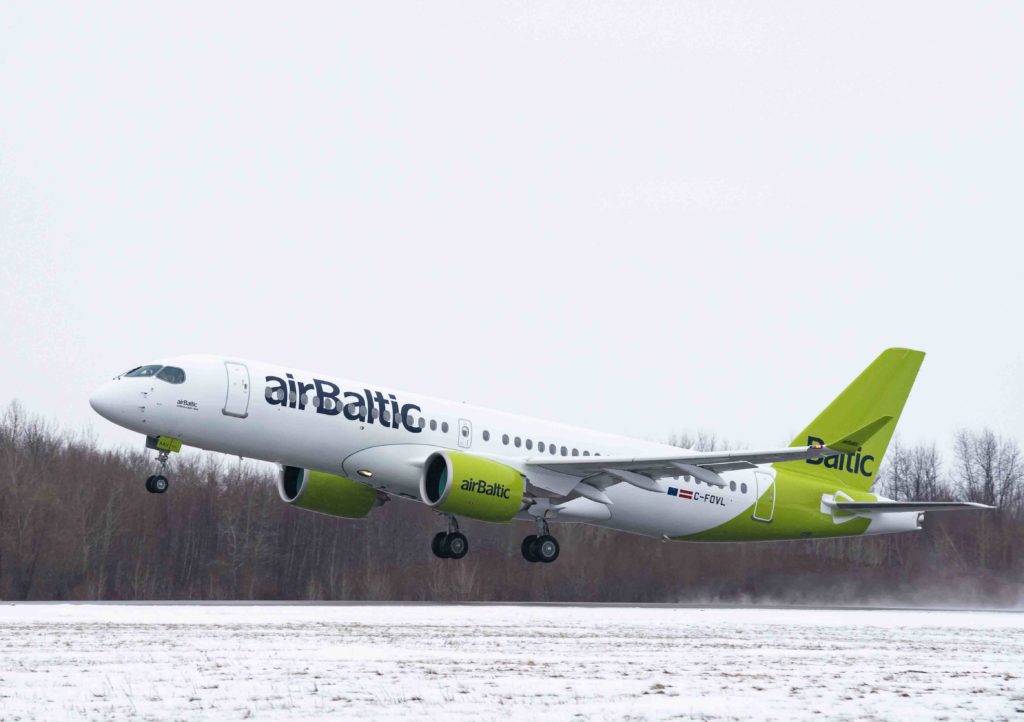Estimated reading time 7 minutes, 22 seconds.
Having gained independence from the Soviet Union on May 4, 1990, the Republic of Latvia recognized that it required its own airline to support the nation’s economic growth by connecting Riga with regional centres. airBaltic was created as a public-private partnership on Aug. 28, 1995. Its first flight took place on Oct. 1, 1995, aboard a 33-seat Saab 340A turboprop, from Riga to Stockholm. Within six months, a trio of BAE Avro RJ70 quadjets had joined the Saab.
During the subsequent 15 years, the carrier’s route network expanded significantly. By January 2011, its fleet of 34 aircraft included two Boeing 757-200s, six 737-300s, 10 737-500s, eight Fokker 50s and eight Bombardier Q400s. Unfortunately, the company was in financial distress.

Time for change
Martin Gauss was appointed CEO in October 2011 and in March 2012 the company’s “ReShape” restructuring plan was introduced. A key element of its strategy was the rationalization of the disparate fleet. On Dec. 20, 2012, airBaltic ordered 10 Bombardier CS300s and took up options for an additional 10 units. The options were later exercised. The first example of the subsequently renamed Airbus A220-300 was delivered to Riga on Nov. 29, 2016 — exactly three years ago. It performed its first revenue flight on Dec. 14, 2016.
Since then, airBaltic has carried over four million passengers on more than 40,000 flights aboard its A220-300s. They are used within the carrier’s network on both short hops (Riga-Tallinn, 152 nm, 0:50 block time) and on long flights (Abu Dhabi-Riga, 2,360 nm, 6:35 block time). Daily utilization has been as high as 18 hours.

On May 28, 2018, the company was operating eight of the 20 A220-300s that it had ordered. That day, it announced that it had ordered 30 more and had options for an additional 30 units. A key element of the carrier’s updated “Destination 2025” business plan is the standardization of its fleet, based exclusively on the A220-300. In mid-November 2019, airBaltic’s fleet of 39 aircraft included 20 A220-300s, six 737-300s, one 737-500 and 12 Q400s. If all options are exercised, it could have as many as 80 A220-300s in service by the end of 2024.
A noteworthy event
On Nov. 28, Airbus Canada held a ceremony at its plant in Mirabel, Que. The event marked two milestones: the completion of the 100th A220 produced for a customer, and that airBaltic will have the largest fleet of A220-300s when its 21st example is delivered next week. On hand to celebrate with the employees who produce the type were Gauss and Philippe Balducchi, the CEO of Airbus Canada.
When Skies asked Gauss how airBaltic might deploy as many as 80 A220-300s, he noted that the intention is to base 50 of them in the Baltics and the remaining 30 in the Nordic countries.

Earlier this year, Airbus announced that it expects to introduce a 350 nm increased range capability for the A220-300 during the second half of 2020. This would enable the aircraft to fly an impressive 3,350 nm. Asked if his company might take advantage of that enhanced performance to operate trans-Atlantic routes, Gauss said that it is unlikely to happen. On the other hand, distant cities such as Addis Ababa, Ethiopia and Delhi, India might eventually be added to the carrier’s network should demand develop for such services.
It is interesting to note that airBaltic’s passenger traffic has increased 22 per cent year-over-year during the first ten months of 2019. Given that a significant proportion of its fleet is now represented by the A220-300, it is thought that the company’s unique business model and the A220 have been contributing factors.
airBaltic offers two distinctly different customer experiences aboard its flights — a full service class up front and a no frill low-fare service further aft. As for the appeal of the A220-300, Gauss commented that airBaltic customers are repeatedly praising its cabin’s roomier seats, 50 per cent larger windows, bigger overhead bins, wider aisle and more spacious lavatories.

The A220 has been an impressive financial performer as well. Gauss noted that compared to the company’s Boeing 737-300s, that have roughly the same number of seats, the A220-300 burns between 19 and 24 per cent less fuel – depending on the route. A side benefit is the similarly reduced levels of CO2 emissions. Given that European regulations require carriers to purchase carbon credit certificates, this reduced carbon footprint produces cost savings.
Final words
airBaltic currently flies from its base at Riga to 75 destinations in Europe, Scandinavia, Russia, the Commonwealth of Independent States and the Middle East. It has approximately 1,600 employees and is profitable. The catalyst for its ambitious business plan will be its growing fleet of Airbus A220-300s. With its lower fuel burn, smaller carbon footprint, quieter engines and more comfortable cabins, this Canadian aerospace icon should continue to provide benefits to airBaltic and its customers during future decades.









Feels so nice to read some positives in the Airline Industry ..AIRBUS / BOMBARDIER are definitely doing it right !! ..Boeing you getting any of this ??